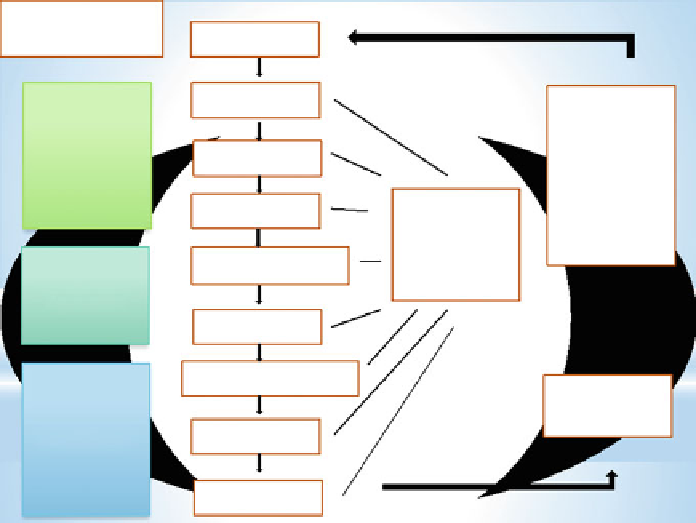Environmental Engineering Reference
In-Depth Information
(a) A System Assessment: this component is a preliminary check to see if the
drinking water supply chain as a whole is capable of supplying water of
suf
ciently high standard to meet regulatory targets of the country.
(b) Operational Monitoring: the higher order identi
cation of the existence of
control measures in the drinking water system.
(c) Management Plans: the documentation of system assessment and actions taken
during various operational conditions; it also de
nes monitoring and com-
munication plans.
The breakdown of these three components is described in Fig.
6.2
. After setting
up the Water Safety Plan implementation team and describing the supply system,
the most important step is
The WSP team would
consider all potential biological, physical, chemical, and radiological hazards that
could be associated with the water supply. At each step, the objective is to identify
where and what kind of contamination could happen and what are the set of actions
that can be utilized to control each hazard. For example, the hazards may be due to
variations in extreme rainfall events or major storms. The hazard may be due to
accidental or deliberate acts of contamination at either the drinking water treatment
plant or at the wastewater treatment plant that could compromise sanitation and
hygiene.
“
conducting hazard analysis.
”
*
Development of
Water Safety
Plan
Assemble WSP
Team
Describe Water
Supply
System
Assessment
Reviewing
Experience
and Future
Needs
Conduct Hazard
Analysis
Identify Control
Measures
Supporting
Programmes
Define Controls and
Barriers
Operational
Monitoring
Monitoring
Corrective Actions and
Incident Response
Review,
Approval and
Audit
Management &
Communication
Record Keeping
Validation and
Verification
Fig. 6.2 Schematic overview of the WHO water safety plan components

Search WWH ::

Custom Search